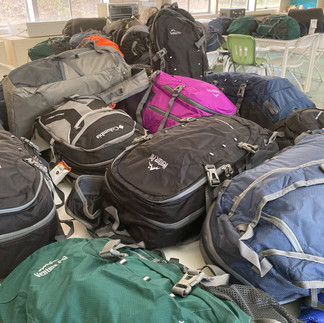
Our 14th annual Holidays Without Hunger food drive for the Food Bank of Contra Costa and Solano began Monday. Inflation makes it even harder for those who live on the margins to feed their families and is a reason donations to food banks are down this year.
There are three collection bins strategically located around campus. Donations will be welcomed through the morning of December 10, when the food bank will come to pick them up.
Here are the types of food the food bank is requesting:
Protein: Peanut butter, chili, hearty soups, dried or canned beans, canned ready-to-eat meals, canned poultry, meat, and tuna;
Fruits and vegetables: Canned fruit in juice, 100 percent juice, canned vegetables, canned tomato products;
Grains: Brown and enriched rice, whole-grain pasta, enriched whole-grain cereal.
* The food bank asks that donations not be in glass containers and not be past their expiration dates.







